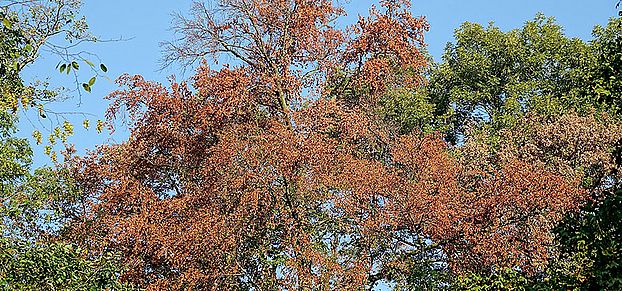How the forest copes with summer heat

Between April and August this year, Switzerland and central Europe have experienced the driest summer season since 1864. Especially the forest seems to suffer from this dry spell: As early as August, trees began to turn brown this year. A current study by the University of Basel indicates that native forest trees can cope much better with the drought than previously expected. It is, however, too early to give the all-clear as a consistently warmer and dryer climate might still put our native forests at risk.
The research was carried out by SPWS members Prof. Dr. Ansgar Kahmen and PD Dr. Günter Hoch with their teams at the Department of Environmental Sciences at the University of Basel.
Reference publication
Lars Dietrich, Sylvain Delzon, Guenter Hoch, Ansgar Kahmen
No role for xylem embolism or carbohydrate shortage in temperate trees during the severe 2015 drought
Journal of Ecology (2018), doi: 10.1111/1365-2745.13051
The study analized mature individuals of six common central European forest tree species. They strongly reacted to a severe summer drought by reducing their water consumption and stopped growing. The authors did not detect any xylem embolism or carbohydrate depletion in these trees. This suggests, that xylem embolism formation and carbohydrate reserve depletion are not routine in temperate trees during seasonal strong drought. It also reveals a low vulnerability of the physiological integrity of temperate trees during drought events.
Quelle
Uni Basel News
